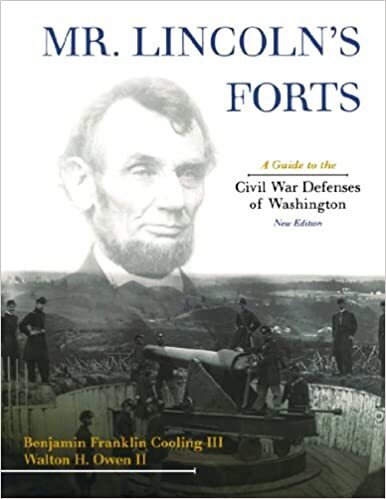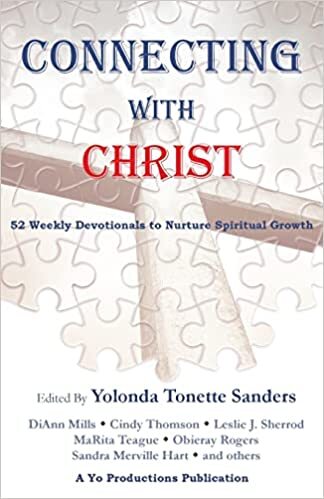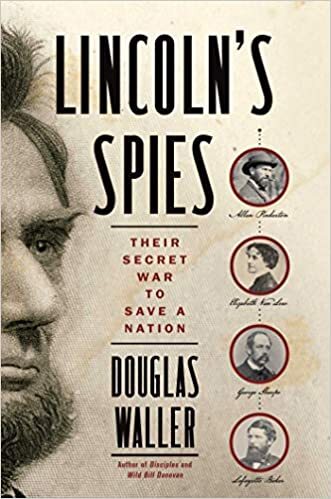Sandra Merville Hart's Blog, page 34
March 2, 2022
Civil War in Washington DC: The Willard Hotel and President Lincoln’s Inauguration

by Sandra Merville Hart
By 1860, the Willard Hotel, located at 1401 Pennsylvania NW, was a center of activity in the bustling capital then known as Washington City.
The South began seceding after Abraham Lincoln won the presidential election. He had to travel from Illinois to Washington City for his inauguration.
Allan Pinkerton, head of Pinkerton National Detective Agency, learned of assassination plots for president-elect Lincoln’s life in Baltimore. He feared that he would be killed. Though Lincoln was reluctant to believe his life was in danger, he agreed to Pinkerton’s alternate travel plans. It meant that his family would come later. Ward Hill Lamon was Lincoln’s bodyguard.
Unfortunately, secrecy was required to ensure Lincoln’s safety. That meant he arrived at dawn in Washington City without the fanfare that normally accompanies such an event.
The president-elect was ushered into the less-crowded ladies’ entrance to Willard Hotel on 14th Street where one of the Willard brothers met him on February 23, 1861.
Many people ridiculed Lincoln for sneaking into the city and he soon regretted his decision.
Mary and the boys arrived and the family stayed in a comfortable second-floor suite.
Henry Willard learned that Lincoln had forgotten to pack his bedroom slippers and talked to his wife. She offered him a colorful pair that she recently knitted for her grandfather. Lincoln borrowed them for the remainder of his stay.
Mary Todd Lincoln didn’t receive the same warm welcome from the Washington society ladies at the hotel. They seemed to dislike her from the beginning.
Abraham Lincoln stayed at Willard Hotel for ten days. Then his Inauguration Day arrived. On March 4, 1861, over 25,000 people gathered at the Capitol to witness the swearing in of the sixteenth president.
No one could have foreseen the turmoil of the next four years on that cloudy, blustery day.
The Willard Hotel is steeped in history. There is a scene at this hotel in my novel, Avenue of Betrayal, Book 1 of my “Spies of the Civil War” series, where the characters dine there. I was thrilled to use such an important location as part of the story.

Sources
Epstein, Daniel Mark. Lincoln and Whitman: Parallel Lives in Civil War Washington, Ballantine Books, 2004.
Selected by Dennett, Tyler. Lincoln and the Civil War In the Diaries and Letters of John Hay, Dodd, Mead & Company, 1939.
“The Willard Hotel,” White House History, 2020/06/11 https://www.whitehousehistory.org/the-willard-hotel.
“The Willard Hotel in the 19th Century,” Streets of Washington, 2020/06/11 http://www.streetsofwashington.com/2012/07/the-willard-hotel-in-19th-century.html.
Waller, Douglas. Lincoln’s Spies, Simon & Schuster, 2019.
March 1, 2022
Mr. Lincoln’s Forts by Benjamin Franklin Cooling III & Walton H. Owen II

by Sandra Merville Hart
A Guide to the Civil War Defenses of Washington
What a great resource about the Civil War forts that once protected Washington DC!
I was researching Avenue of Betrayal, Book 1 of my “Spies of the Civil Series” and having difficulty finding significant details about the forts built during the war when I found this treasure.
The book contains drawings, sketches, old photos, and maps to provide readers, history buffs, and researchers with a deeper understanding.
The authors give an overview of why the forts were needed as well as those responsible for designing and building them.
Details are included for each fort that made up the defenses around Washington DC.
Recommended for Civil War research and for lovers of American history.
February 22, 2022
Connecting with Christ Edited by Yolonda Tonette Sanders

52 Weekly Devotionals to Nurture Spiritual Growth
I wanted to let you know about this devotional book but I also contributed devotions to the collection so I’m not writing a review of it.
The book is divided into themes, such as Renewal, Revival, Rest, and Provision. Devotions in those sections deal with those themes.
Each devotion begins with a scripture reference and personal reflections from the author. It ends with a prayer. There is room to for readers to pen their own thoughts as part of their own study.
Readers may recognize some of the devotional authors in this collection such as DiAnn Mills, Yolonda Tonette Sanders, Cindy Thomson, Obieray Rogers, Chelsea C. Elliott, Sandra Merville Hart, and Leslie J. Sherrod.
I’m grateful to be part of such a thought-provoking collection.
-Sandra Merville Hart
February 20, 2022
Lemon Snaps Recipe

by Sandra Merville Hart
A character in Book 1 of my “Spies of the Civil War” series, Avenue of Betrayal, bakes lemon cookies in the story. This talented cook earns the praise of soldiers far from home when she serves these delicious lemon cookies at parties. I’m sharing a recipe that’s over a century and a half old to show the way Rebecca, my character, prepared them in the novel.
The original 1877 baker who shared this cookie recipe is Mrs. E. L. C. of Springfield.
Ingredients
½ teaspoon baking soda
1 cup sugar
10 tablespoons butter
2 lemons
½ teaspoon lemon extract
1 ½ cups all-purpose flour
Dissolve ½ teaspoon of baking soda into 2 teaspoons of hot water. Set aside.
Cream together 1 cup of sugar and 10 tablespoons of butter. Stir in the prepared baking soda.
Mrs. C. simply said to flavor with lemon. I added the zest of 2 lemons, the juice of 1 lemon, and ½ teaspoon of lemon extract to the batter.
Mrs. C. was another one who advised adding “flour enough to roll thin.” I used 1 ½ cups of flour, blending into the wet ingredients a little at a time.
Lightly flour the counter and rolling pin and then roll out the batter. Cut into desired shapes.
Spray a baking sheet with cooking spray or line with parchment paper. The cookies flatten while baking so allow room between them. Bake cookies at 350 degrees about 9 – 11 minutes.
Delicious! Wonderful lemony flavor really came through. Guests loved the texture and flavor. If you like lemony desserts, this is the cookie for you.
Though the original baker left out a few important details, I’m happy to say that I only had to make this recipe once—and the cookies were a hit!
I’d definitely make these again.
I’d love to hear if you try it.

Sources
Compiled from Original Recipes. Buckeye Cookery and Practical Housekeeping, Applewood Books, 1877.
February 16, 2022
Civil War Songs Stirred Patriotic Feelings

by Sandra Merville Hart
The American Civil War (1861—1865) inspired many songs. In fact, “The First Gun is Fired! May God Protect the Right!” was published three days after the firing on Fort Sumter, the official beginning of the war. George F. Root composed that song and over thirty others about the war.
Not all the songs popular during the war were written in that turbulent period. Also, different words were often written for the same tune. For example, the tune for “Maryland, My Maryland!” was the same as the Christmas song “O Tannenbaum.”
War songs often dealt with topics on the minds of soldiers, such as home, sweethearts, family, battles, battlefield deaths, faith, survival, and heroes. “The Drummer Boy of Shiloh,” “Just Before the Battle, Mother,” “The Girl I Left Behind Me,” and “Comrades, I Am Dying!” are examples of these.
Songs that particularly struck a chord with citizens dealt with patriotic themes, missing a family member, and grief for those who weren’t coming home, of which “Battle Hymn of the Republic” and “The Vacant Chair (or We Shall Meet but We Shall Miss Him)” are poignant examples.
“God Save the South,” “Dixie,” “The Bonnie Blue Flag,” “All Quiet Along the Potomac Tonight,” and “Maryland, My Maryland!” were sung in the South.
“Battle Cry of Freedom,” “Battle Hymn of the Republic,” “The Grant Pill,” and “The Children of the Battle Field” were among those sung in the North.
Union and Confederate armies heard each other’s bands playing on the eve of the Battle of Stones River. A musical rivalry ensued where Union and Confederate bands took turns playing songs that supported their own side. When bands played “Home! Sweet Home!”, both sides sang together. One can only imagine how mutual yearning for their families swelled their voices into the night sky.
This song bound both sides together for an unforgettable moment.
Some of these tunes are examples of what the characters in my novel, Avenue of Betrayal, Book 1 of my “Spies of the Civil War” series, enjoyed at regimental band concerts in the story. My hope is that these scenes transport readers back when such concerts were an oasis during those turbulent war days, as well as show that not everyone in the city was loyal to the Union.

Sources
(Introduction by) Crawford, Richard. The Civil War Songbook, Dover Publications, Inc., 1977.
“Music of the American Civil War,” Wikipedia, 2022/02/01 ttps://en.wikipedia.org/wiki/Music_of_the_Am....
February 7, 2022
Civil War Novel Releases Today!

by Sandra Merville Hart
I’m thrilled to announce that Avenue of Betrayal, Book 1 of my new “Spies of the Civil War” releases today, February 8, 2022!
Though the series is about a fictional family, there are actual historical spies who touch the stories.
Avenue of Betrayal is set in Washington City (Washington DC) in 1861. Union soldiers came to the capital to train. There were so many regiments camped in and around the city that citizens saw a sea of tents in every available field. Soldiers drilled daily so the sounds of marching feet, bugles, drums, and musketry permeated the atmosphere.
And there was a lot of spying for the Confederacy that happened within blocks of the White House.
Here’s a bit about the book:
Betrayed by her brother and the man she loves …
whom can she trust when tragedy strikes?
Soldiers are pouring into Washington City every day and have begun drilling in preparation for a battle with the Confederacy. Annie Swanson worries for her brother, whom she’s just discovered is a Confederate officer in his new home state of North Carolina. Even as Annie battles feelings of betrayal toward the big brother she’s always adored, her wealthy banker father swears her and her sister to secrecy about her brother’s actions. How could he forsake their mother’s abolitionist teachings?
Sergeant-Major John Finn camps within a mile of the Swansons’ mansion where his West Point pal once lived. Sweet Annie captured his heart at Will’s wedding last year and he looks forward to reestablishing their relationship—until he’s asked to spy on her father.
To prove her father’s loyalty to the Union, John agrees to spy on the Swanson family, though Annie must never know. Then the war strikes a blow that threatens to destroy them all—including the love that’s grown between them against all odds.
Order your copy today on Amazon and other retailers!
February 6, 2022
Chicken Croquettes Recipe

by Sandra Merville Hart
A character in Book 1 of my “Spies of the Civil War” series, Avenue of Betrayal, prepares chicken croquettes for a picnic. She’s a talented cook and everything she makes is a crowd-pleaser. I’ve never made these and it seemed a good idea to try this recipe from an 1877 cookbook, to make them as similar to the way Rebecca, my character, prepared them in the novel.
If you’ve ever tried to follow recipes from 150 years ago, you’re already aware that there’s a lot of guesswork involved. In this particular recipe, it gives the measurement for rice but not the amount of chicken. In fact, the only other hint is that one egg is needed for the actual mixture.
That’s it.
There are actually 2 recipes for chicken croquettes in this book and I studied both of them before creating the following recipe. The original cook for one recipe is Mrs. E. L. Fay, from New York City.
Ingredients
1 ½ cups cooked chicken
1 cup cooked rice, white or brown
2 tablespoons butter, melted
3 eggs, separate
¼ cup heavy cream
½ teaspoon salt
¼ teaspoon pepper
½ teaspoon sage
½ – ¾ cup bread crumbs
Shortening
Mince the cooked chicken. Add rice, butter, and cream and stir until moistened. Stir in 1 beaten egg. Season the mixture with sage, salt, and pepper.
I formed them into balls, but they didn’t hold up well in the skillet. I suggest shaping them into patties.
Beat 2 eggs in a bowl. Place bread crumbs in a separate bowl. Dip croquettes into the egg and then roll them in bread crumbs.
Melt shortening in a skillet over medium – medium high heat. (I used a cast iron skillet which cooks evenly so medium heat worked well for me.)
Frying will take 5 – 10 minutes. Turn croquettes gently to brown on all sides. Wooden spoons worked best for me and 2 croquettes still fell apart. (I suggest patties—and a modification in the recipe that I’ll mention at the end.) This made 8 croquettes. Two were a satisfying lunch for me.
What a great recipe for using leftover chicken!
I liked the croquettes. The sage gave a nice flavor without overpowering the rice and chicken. Rice is a favorite of mine, but this is too much rice for 1 ½ cups of chicken. I’d decrease the amount of cooked rice to ½ cup. I believe they will hold together better.
Also, I’ll add ¼ cup of bread crumbs to the croquette batter next time so that it will hold up better while cooking. The original cooks didn’t do this and I try to follow the historic recipes as closely as I can at first to have the dining experience they had.

-Sandra Merville Hart
Sources
Compiled from Original Recipes. Buckeye Cookery and Practical Housekeeping, Applewood Books, 1877.
February 2, 2022
Civil War Bands and Music

by Sandra Merville Hart
Music was very important to both soldiers and citizens during the Civil War.
Bugles and drums were used to convey orders on the battlefield because they could be heard over the din of battle. Regimental bands played on long marches to entertain the troops and keep their spirits up.
Fiddles, banjos, fifes, and guitars were also popular instruments in regimental bands that played before and during battles to bolster the soldiers’ spirits.
When opposing sides camped near each other before battles, they were often close enough to hear each other’s bands playing. Union and Confederate bands took turns playing songs that supported their own side. This happened on the eve of the Battle of Stones River. When bands played “Home! Sweet Home!”, both sides sang together. I can only imagine how their voices stirred the hearts of every listener as they joined together in song, all bound by a mutual yearning for their families.
On the Homefront, Civil War songs ignited patriotic feelings in citizens.
After the war began, Union soldiers traveled with their regiments to Washington DC, commonly called Washington City at that time, for training. The noise level escalated with the city’s expanding population as troops camped on every available field.
One of the benefits of all the regiments in the Union capital was the music. Bands gave concerts for the enjoyment of citizens. For instance, the United States Marine Band played in the White House garden on Saturday afternoons. Citizens flocked to concerts such as these and sang along with such songs as “Yankee Doodle” and “Columbia, the Gem of the Ocean.”

Sources
(Introduction by) Crawford, Richard. The Civil War Songbook, Dover Publications, Inc., 1977.
“Music of the American Civil War,” Wikipedia, 2022/02/01 ttps://en.wikipedia.org/wiki/Music_of_the_Am....
Nolan, Jeannette Covert. Spy for the Confederacy: Rose O’Neal Greenhow, Julian Messner, Inc., 1960.
February 1, 2022
Getting the Truth by Joe Koenig
Reviewed by Sandra Merville Hart
Discover the Real Message.
Know Truth.
Know Deception.
The author of this book, a retired police officer, has 45 years of investigative experience and he passes on wisdom from those years in this nonfiction book.
This book is packed with advice about how to discern when someone is lying. It teaches investigators to carefully construct their questions to get to the truth as well as how to analyze answers.
The author amazed me with his analysis of actual interviews. The ransom letter for JonBenet to her parents, John and Patsy Ramsey, is also analyzed by the author. It’s fascinating.
I couldn’t put the book down.
I think this is an excellent resource for investigators and for writers of suspense novels. Well-written.
January 25, 2022
Lincoln’s Spies by Douglas Waller

Reviewed by Sandra Merville Hart
Their Secret War to Save a Nation
This book is a great resource about the spying that took place during the Civil War.
I read this book while researching for my novel, Avenue of Betrayal, Book 1 of my “Spies of the Civil War” series. This book gave a nice overview and many specific examples of the spying during the war. Sometimes the information spies provided was credited with helping to win specific battles.
The author divided the book into yearly sections and includes the spies that were active in those specific war years.
Civil War enthusiasts will likely recognize some of the agents discussed in this book: Allan Pinkerton, Belle Boyd, Rose O’Neal Greenhow, Elizabeth Van Lew, and Lafayette Baker. Several of Allan Pinkerton’s detectives, called scouts, are also highlighted.
I also liked how the history of the events, meetings, and battles was interspersed throughout the book, making it an interesting read.
My copy has lots of highlighted sections as a testament to how helpful I found the book.
Recommended for Civil War research and for lovers of American history.



